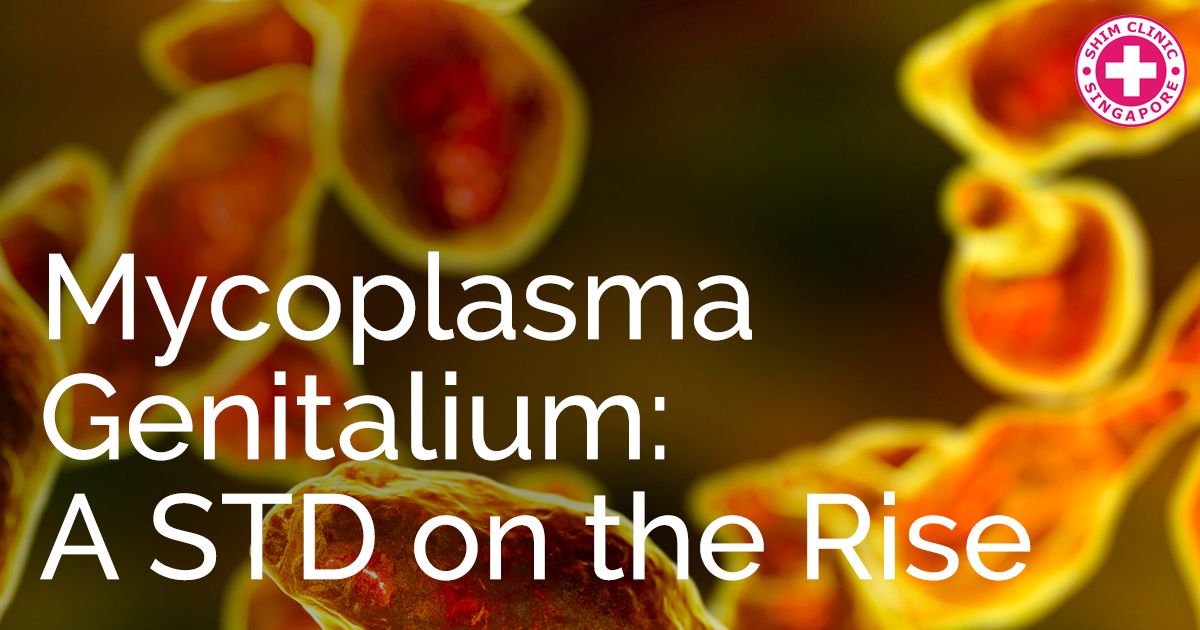While researchers have been very successful in the development of treatments and preventative practices for traditional sexually transmitted diseases (STDs), some new and previously less common problems are now on the rise.
Mycoplasma genitalium is one of these issues. While it’s not as well-known as syphilis and gonorrhoea, mycoplasma genitalium can still lead to lasting consequences.
The Statistics
Certain kinds of STDs have been on the rise in recent years. Mycoplasma genitalium is one of these diseases.
In the US, mycoplasma genitalium turned out to be the STD that has had the greatest percentage increase as a share of all medical insurance claims. The bacterium that was first identified in the early 1980s has gone through a massive surge in infection rates – a staggering 197 per cent increase in the period from 2007 to 2018.
Other statistics show that the number of new mycoplasma genitalium infections has nearly tripled both in urban and rural areas.
These numbers have forced healthcare entities like the Centers for Disease Control and Prevention in the US (CDC) to issue special warnings. Mycoplasma genitalium has been added to the list of the top three pathogens that need to be monitored more closely. There’s an additional reason why the bacterium is being put under so much scrutiny – recent research suggests that it’s increasingly becoming more antibiotic-resistant.
As per American studies, mycoplasma genitalium prevalence rates are estimated at anywhere between one and two per cent of the adult population. There are no global statistics and recent studies establishing a more solid trend but it can safely be assumed that the number of carriers and the rates of infection have gone up globally.
What Is Mycoplasma Genitalium?
Mycoplasma genitalium is a bacterium that spreads through sexual contact. It was identified as early as 1981 but at the time, the rates of infection were negligible.
The problem with mycoplasma genitalium, much like with other STDs, is that it will often remain dormant in the body and not cause symptoms. It’s also a sneaky little bacterium that can spread through rubbing and sexual touching without actual penetration.
In time, mycoplasma genitalium could eventually start causing symptoms.
Some of the most common signs in men include watery discharge from the penis and a burning or stinging sensation during urination. Women will experience unpleasant and foul-smelling discharge, pain during sex, bleeding between periods or after sex and pelvic pain.
There’s also a risk of some complications. These include urethritis, pelvic inflammatory disease in women and cervicitis (inflammation of the cervix). Depending on the severity of some of these complications, women could also experience fertility issues as a result of their mycoplasma genitalium infection.
Unfortunately, many other STDs and medical conditions can cause similar symptoms. It’s impossible to tell whether you have mycoplasma genitalium unless you get tested. Currently, however, no FDA-approved test exists for the quick identification of mycoplasma genitalium. A nucleic acid amplification test can still be used to identify a bacterial sample in your urine.
Risk Factors
Some risk factors have been identified, making it more possible for a person to become infected with mycoplasma genitalium.
Unprotected sex and having multiple sexual partners are two of the biggest risk factors.
In fact, one study suggests that the risk of a mycoplasma genitalium infection increases by 10 per cent for every added sexual partner. Remember – some carriers could be asymptomatic. A person that appears perfectly healthy could give you mycoplasma genitalium or another hidden STD.
An early age of starting one’s sex life and co-infection with another STD have also been linked to a higher risk of getting mycoplasma genitalium.
Research suggests that a mycoplasma genitalium infection could be passed vertically from mother to newborn baby.
Treatment Options
Because mycoplasma genitalium is a bacterium, it can be destroyed successfully through antibiotic treatment. Both tetracyclines and fluoroquinolones are a good choice for the effective treatment of the infection. Obviously, an earlier diagnosis will lead to a simpler treatment. The more you wait, the higher the likelihood of developing complications that will also have to be addressed medicinally.
Keep in mind that common antibiotics like penicillin do not work on mycoplasma genitalium. Such antibiotics work by damaging the cell walls of bacteria and eventually killing them. Mycoplasma genitalium, however, doesn’t have cell walls to be destroyed by the antibiotic.
As also mentioned, the bacterium is starting to get resistant to some common types of antibiotics. Hence, your doctor may have to try out one or more types of treatments until the most effective medication is pinpointed.
Usually, a person is treated for the infection and tested a second time after a month. If the test reveals no bacteria, the individual can resume their normal life. Otherwise, a second or a subsequent round of antibiotics will be required.
Being information about new STDs on the rise and those becoming drug resistant like super gonorrhoea and Mega Shigellosis is essential to protect yourself and the person you love.
It’s best to avoid casual sex, to use barrier protection like condoms and to enjoy intimacy in a committed, monogamous relationship. If you have a casual encounter, do test yourself for common STDs frequently.
Those who have tested positive for mycoplasma genitalium and are currently on antibiotic treatment should avoid having sex for the first seven days after the initiation of the treatment or at least an STI test comes back negative for the bacterium.
Do you have questions about mycoplasma genitalium and other sexually transmitted infections? Do you want to get tested? Shim Clinic is a men’s STD clinic can help. Contact us today to have your questions answered or visit us during our working hours every single day for a consultation.

